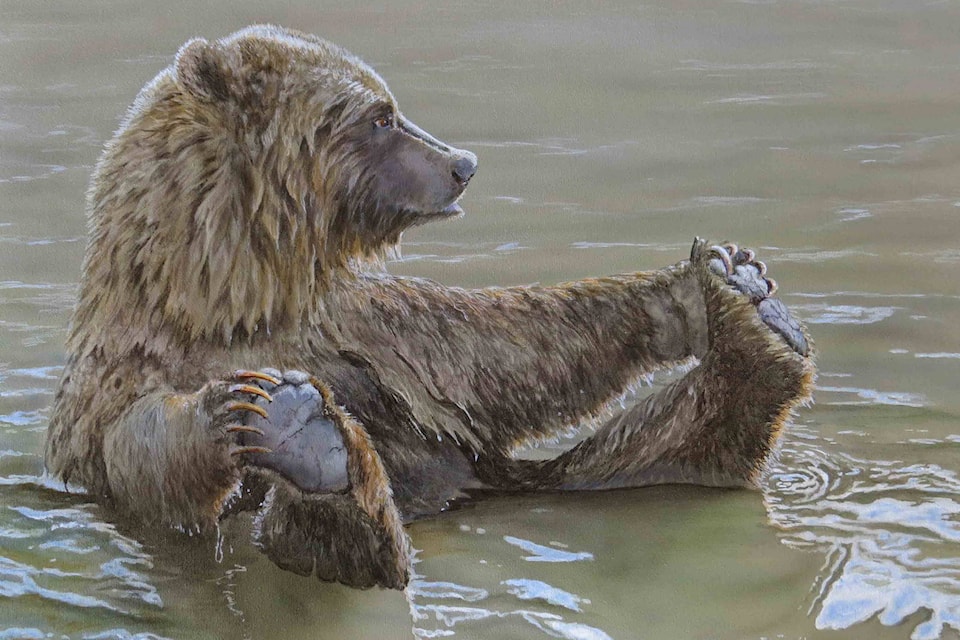By Antony De Wet, Observer contributor
Salmon Arm artist Valerie Rogers joins some of Canada’s most prestigious artists. Rogers’ painting, Bathing Bear, is one of 11 pieces selected by hundreds of submissions from artists across Canada to be part of a prestigious project.
“The National Art Portfolio is a unique program that not only promotes our country’s outstanding natural artists, but the growing need to conserve the natural areas that inspires their work,” says Michaela Bell, Ducks Unlimited’s national manager of retail operations.
By donating her artwork to Ducks Unlimited Canada, Rogers is helping raise funds for wetland conservation.
Paintings selected for Ducks Unlimited’s National Art Portfolio are made into high-quality prints for use in Ducks Unlimited’s fundraising initiatives. Money raised supports wetland conservation work, scientific research, and education programs. Wetlands are some of the most important ecosystems on the planet: they naturally clean water; prevent floods and droughts; and help mitigate the effects of climate change by holding large amounts of carbon.
“Ducks Unlimited has a strong relationship with Canadian artists like Valerie Rogers,” says Bell. “I’m confident her painting will be very successful in helping us raise the money we need to continue our wetland conservation work.”
Rogers credits extensive time spent in the mountains and woods, observing animals and watching how they live, as the inspiration for her artwork. In her painting, Bathing Bear, she gives people a glimpse into the private life of a grizzly bear.
“Grizzly bears have a high degree of intelligence, curiosity, and a sense of humour,” says Rogers. “This painting was created to highlight those bear characteristics.”
Artwork by Valerie Rogers, and other Canadian nature artists, are being sold at Ducks Unlimited community fundraising events, on art auction easels in businesses across the country and online at www.ducks.ca.
Ducks Unlimited is the leader in wetland conservation. They are a registered charity partnering with government, industry, non-profit organizations, and landowners, to conserve ecologically critical wetlands.




